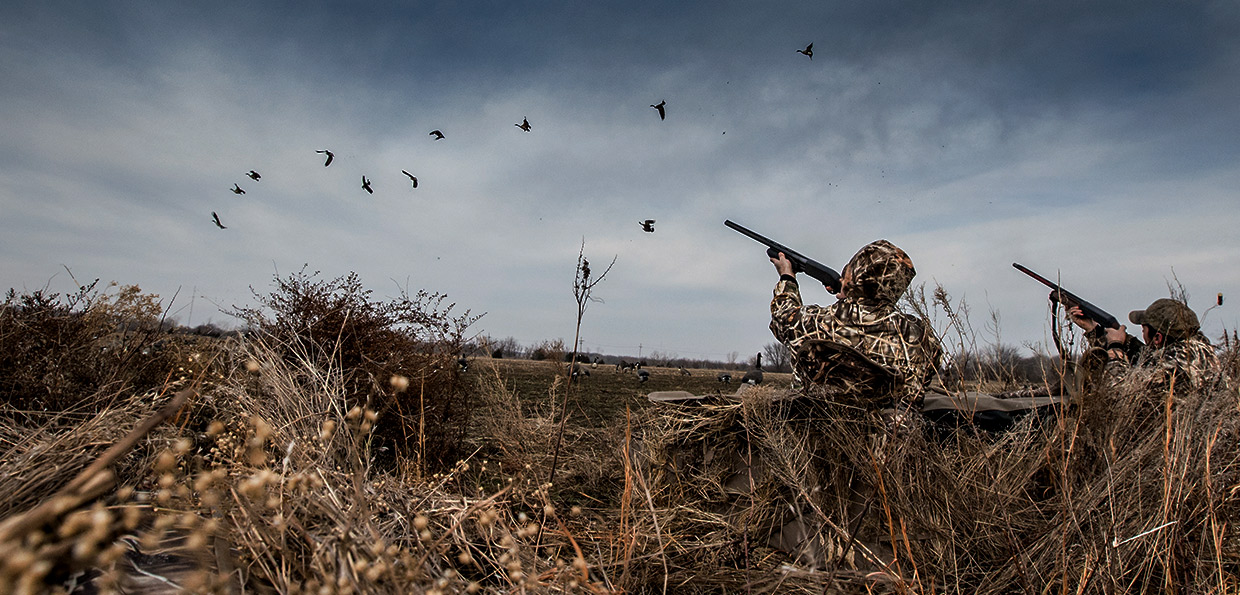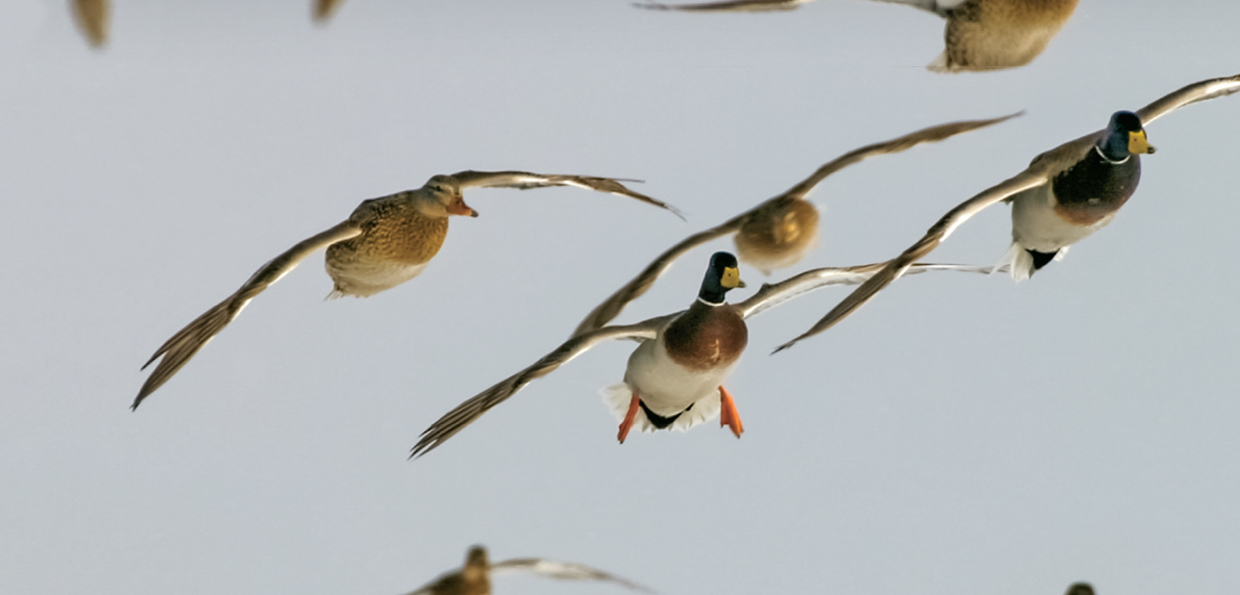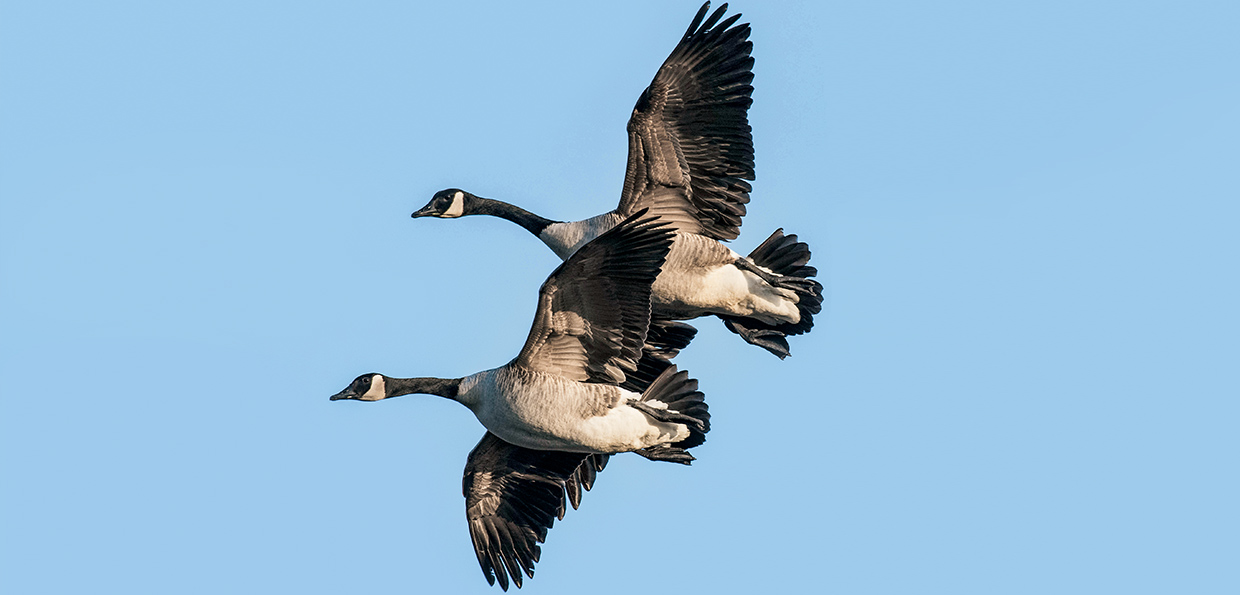Field Hunt

When we think about waterfowl hunting, we usually drum up the image of wetlands and boat blinds, but some of the best waterfowl hunting actually occurs on dry land. The nice thing about the field hunt is that it can be as simple or as complicated as you make it—so long as you can find a hot field, you’ll have plenty of opportunities.
Getting to Know Your Prey
If you’re embarking on a field hunt, you’re going to be targeting “puddle ducks” or “dabblers”: these are birds that primarily feed on nutritious grain in farm fields. They generally stay on the outskirts of bodies of water when around roosting waters, whereas their counterpart “divers” submerge themselves underwater to feed.
Some people opt for the field hunt because they prefer to leave roosting waters alone as a place of refuge and safety for waterfowl species. Other people like the convenience of the field hunt because it means they can avoid the uncomfortable wetness and cold of the water hunt.
And some just love the rush of days spent scouting finally paying off as they watch their target fall out of the sky.
Whatever your reason, the species of waterfowl you’ll encounter are:
- Canada Goose
- Mallards
- Pintail
- Blue-Winged Teal
- Green-Winged Teal
- North-Fronted Geese (Specklebelly)
- Black Duck
- Wood Duck
- Redhead
- Snow Geese
Science Behind Snow Geese Hunting in North America
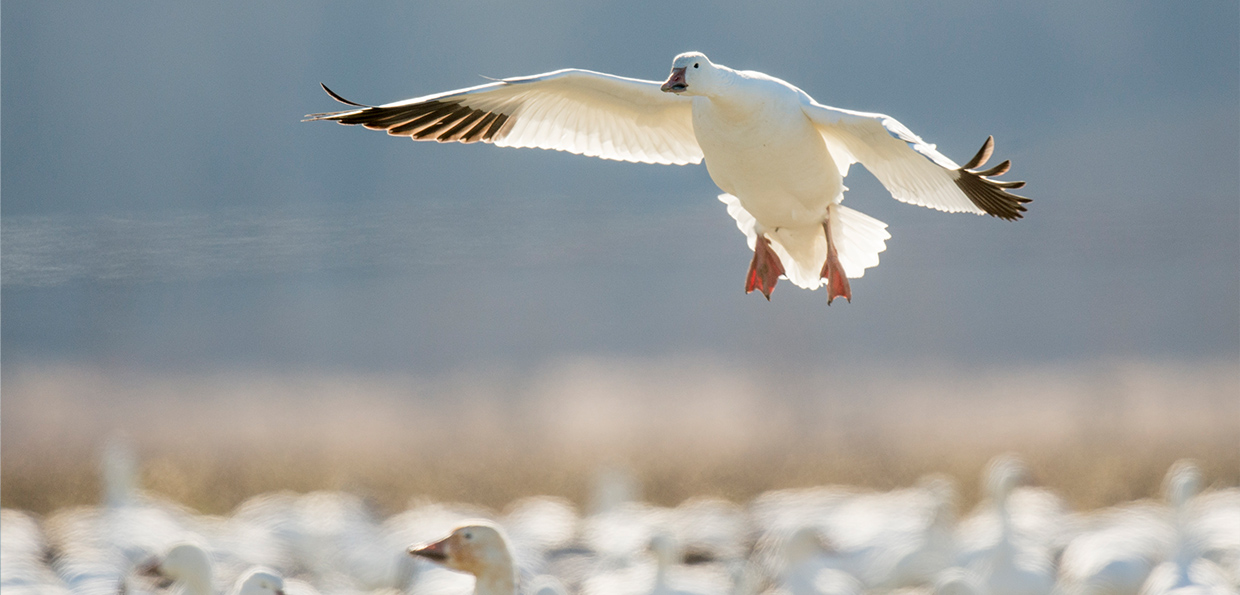
Everything you must know about snow geese, the spring hunt and why waterfowl hunters have been shooting them for 20 years in North America.
Scouting Strategies On Land
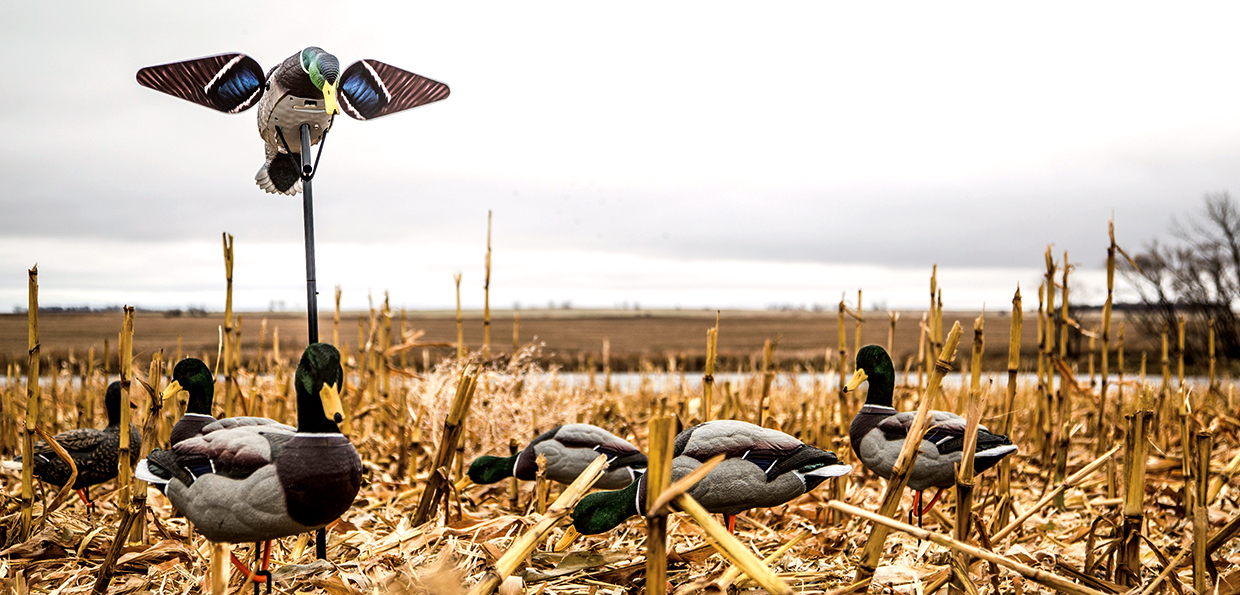
Field Decoys
Getting Your Ducks in a Row
The importance of having a good decoy selection, and knowing how to utilize it properly, cannot be overstated. Waterfowl are skittish creatures, and they intuitively associate numbers with safety, so the more you have the better. You’ll want a larger spread on land than you would on the water, so a lot of hunters opt to use a combination of multiple models for maximum realism.
Decoys come in four basic types:
- Shell: Stack easily for transport, 3-D realism.
- Silhouette: Two-dimensional, but good for adding numbers.
- Wind Stocks: Fall flat without wind, but great for simulating movement.
- Full-Body Models: Most realistic appearance, difficult to transport, expensive.
Typically, on land, hunters will arrange their decoys in a C-shape, with the ideal “landing spot” or “X” centered. Beyond that, follow these simple tips to help with your decoy set-up:
- Don’t be afraid to mix decoys, but because birds usually feed into the wind and ducks stay ahead of geese on the ground, ensure you place goose decoys downwind of duck decoys.
- Use decoys to disguise yourselves! If you’re too far from your spread or just hiding up wind, geese and ducks can usually pick you out.
- Use the most realistic decoys on the outskirts of your set up.
- Incorporate some motion. This will help make your set up look even more convincing, and it can be easily done with a goose flag, or a DIY version made with a dowel rod and durable material.
- Leave a space in your decoy arrangement that provides a natural landing spot for birds. Keep things loose so incoming birds aren’t worried about overcrowding. X, V, C, or J formations work well.
Pro Tip: It is a good idea to set up two spreads of decoys: one large one, which entices high-flyers to come down and circle, and one small, which waterfowl might be less suspicious of.
Calling Strategies
Effective calling is more of an artform than a science, and the best callers gained their expertise through experience and trial and error, so it’s likely you’ll have to do a lot of the same in order to find success. Think of your calls as tools to be deployed at just the right moment, intended to convince birds who seem unsure about your decoys.
Depending on whether you’re trying to entice duck or geese, there are different call strategies to employ. There are four different types of duck calls that are crucial for a waterfowl hunter to know:
- The Quack
- Feed Call
- Mating Call
- Comeback Call
Canada geese produce a large variety of sounds, and sophisticated waterfowl hunters will have a wide range of calls in their back pocket to entice birds, but you can accomplish a lot just by knowing two basic calls:
- The Long-Range Hail: This a two-note sound that can be described as a “her-onk” used to entice birds far off in the distance. It should start out low and growling, and then shifts in the second note to a higher-pitched and sharper sound. As birds approach, speed up the call and slowly decrease the volume.
- The Cluck: Once birds are within a closer range, transition to this is one-note sound that resembles an “onk” and repeat over and over until the birds are within shooting range
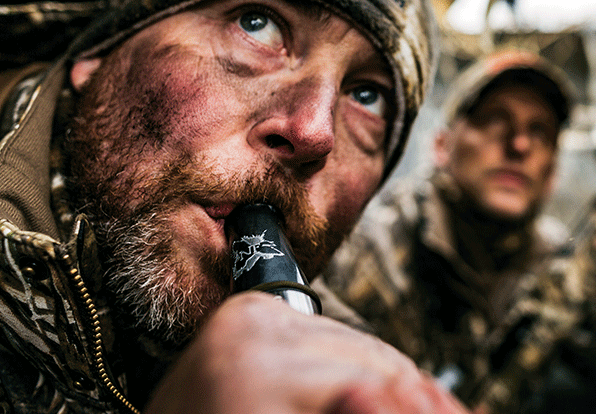
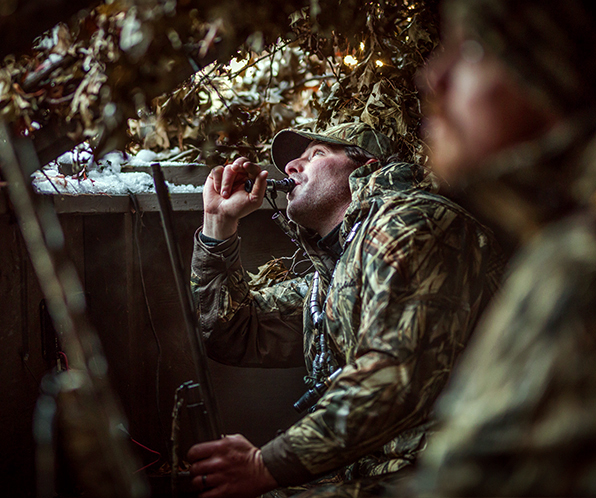
Pro Tips
Practice Makes Perfect: The best way to gain proficiency in the art of calling is to watch instructional videos and practice at home. Try to mimic sounds exactly and play close attention to inflection and tone. Ensure you’re drawing air up from your diaphragm and not your cheeks.
Don’t Overdo It: Most experienced hunters say the number one mistake new hunters make is calling too much. Just like with decoys, the object of the game is to make sounds that feel authentic to ward off any concerns incoming birds might have.
Timing is Everything: Keep your call pressed to your lips or easily accessible, so the moment you read incoming or overhead birds’ hesitation, you can perform a quick call to seal the deal. Typically, a hesitating bird will move their heads and necks or disrupt their flight pattern. If you see any of those signs, it’s time to call!
Consider Their Position: Try to call at a time where birds don’t have to redirect their flight path to get to you. You should call at the moment they’d have a clear path to the “X”.
Read the Room: When you finally get out into the field and you’re utilizing your calling strategies, pay attention to how birds are responding. What works, what doesn’t. Every bit of experience will help you during your next hunt.
On The Hunt
Shoot Your Shot
